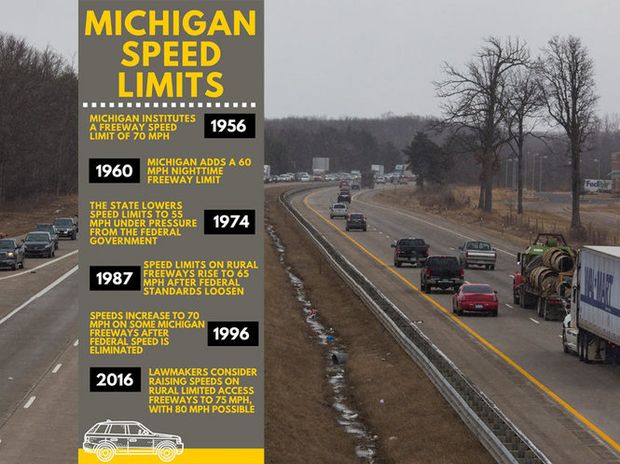After Michigan raised speed limits on certain roads, those stretches of highway saw a 17 percent rise in crashes and a 19 percent rise in injuries, as a new report from the state details. What’s interesting is that these are lower numbers than some critics expected.

Michigan raised the speed limit to 75 mph on 614 miles of roadways with a 2016 law. Those stretches of highway went from some of the safest in the state to the sites of 14 fatal crashes and 589 injuries, a five year high, the Bridge reports.
One of the problems, explained Brad Wieferich, director of MDOT’s Bureau of Development, is that drivers who were already going about 75 mph are now speeding on top of the new limit. From Bridge:
The Michigan Department of Transportation routinely collects speed data at automated counting stations across the state, and a Bridge Magazine analysis indicates speeds consistently rose at sites that went to 75 mph.
One day in June 2018, for instance, on a stretch of US-131 in Montcalm County in west Michigan the average motorist was traveling 76.9 mph, up from 74.6 mph in 2016. Roughly 40 percent of drivers were speeding at more than 80 mph, up from 10 percent two years prior.
“Greater speed automatically provides greater risk,” Wieferich said.
“The cars are way better than they used to be — better braking, better handling, better from an overall safety perspective. But at the end of the day, it’s still physics. Speed is distance over time… and with everyone on their cellphone that I see on the freeways, I would bet that our reaction times are worse.”
This report does come with some caveats. Though troubling trends, the limited data doesn’t give us a clear enough picture of what is happening on Michigan’s freeways. Many critics of the law expected much worse crash rates. Also, as Lt. Lance Cook, head of the Michigan State Police traffic crash reconstruction unit, pointed out to Bridge, speed limits that are too low are also a hazard.
“What we found is that if the number on the sign is artificially low, the drivers aren’t going to obey it and you can actually make traffic more dangerous by putting groups in conflict with each other,” Cook said.